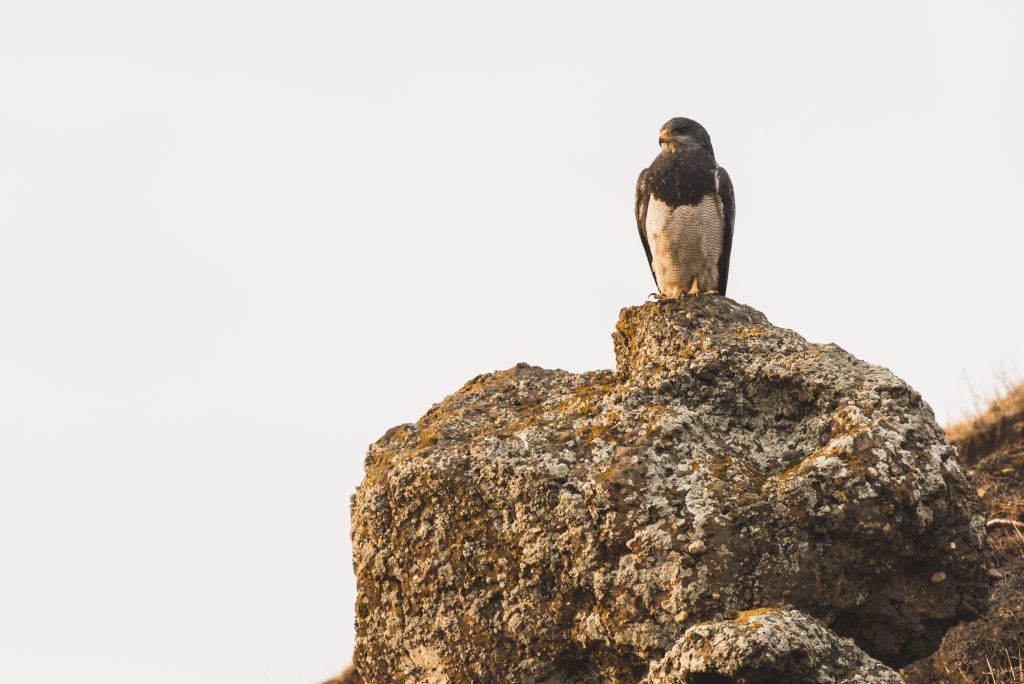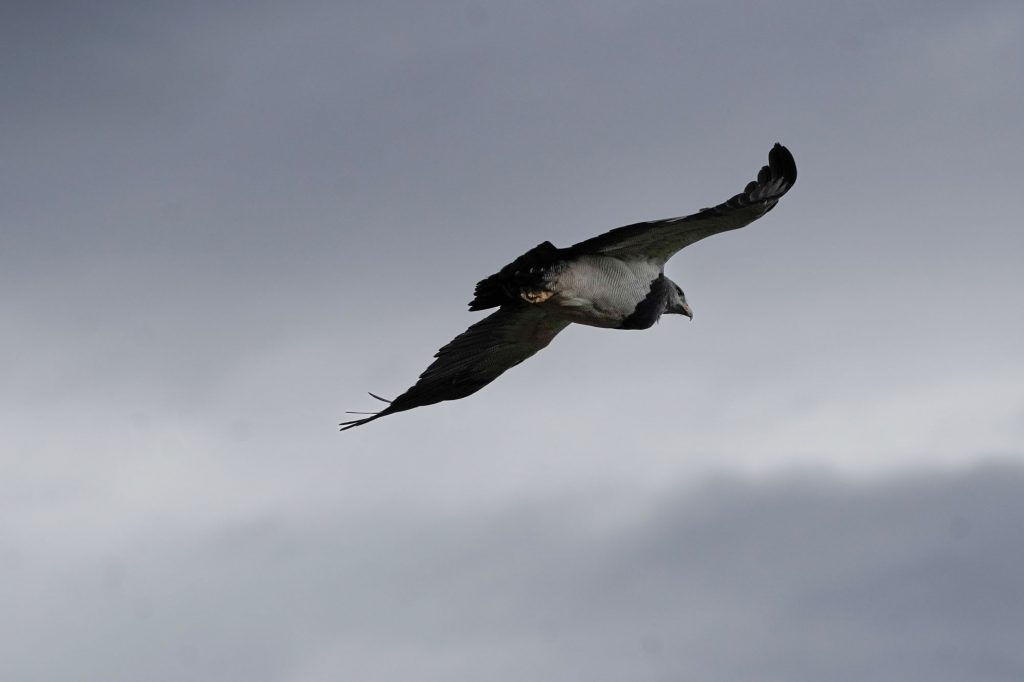The Chilean Eagle, also known as the Mora Eagle, is a bird of prey that lives in South America and is widely found in Chilean Patagonia’s Parque Bahía Esperanza. It mainly inhabits mountains and hills and nests in large trees or in crevices in cliffs.
According to the International Union for Conservation of Nature (IUCN), the status of the Chilean Eagle is stable, however, the destruction of its habitat and illegal hunting are becoming a problem for their population.

Some local people believe that, being a bird of prey, it is a threat to livestock, which has led to increased hunting by ranchers. Educating the community about this species is a priority.
Measuring between 70 and 90 centimeters, the Chilean Eagle’s wingspan often reaches 2 meters. It is easy to identify by its contrasting black and white coloring and by its characteristic flight, with short wingbeats and a very erect tail. The adult male has a white ventral area, with fine black stripes, and a black back with greyish-colored feathers on the wings. The female looks very similar, but can be distinguished by her larger size.
This animal takes advantage of the wind to glide, which it generally does in circles, keeping on the lookout for its prey, among which are rodents, snakes, or even birds, which it hunts by swooping down, killing them immediately with its strong claws and peak. It is a natural pest controller. Known for its speed in flight, as soon as the eagle detects its prey it can swoop down at speeds up to 160 km/hr.

The Chilean Eagle is monogamous; it will only have one partner throughout its life unless one of them dies or cannot produce offspring. Typically, the female lays between 1 and 2 eggs and they are incubated for an average of 30 days. The young are born with brown feathers, and while they are growing and fed by their parents for up to a year, they develop the striking black and white coloring.
We invite you to come observe it and enjoy its imposing flight and presence, becoming one of the few lucky enough to see it in person! To learn more about this incredible bird of prey and plan your visit to Parque Bahía Esperanza, please visit www.parquebahiaesperanza.com.
